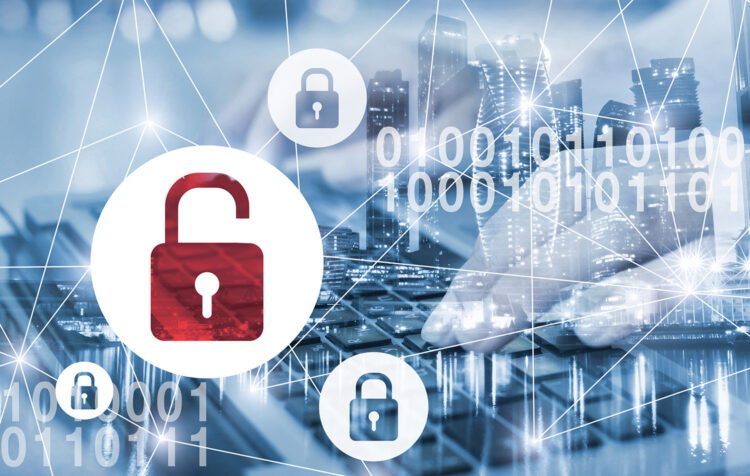With an increase in technology being leveraged by organizations around the world came a plethora of challenges, including. Increasingly aggressive and advanced cyberattacks are a significant danger, causing harm to sensitive data, consumer records, and business continuity.
This article describes the significance of cybersecurity to modern times and explains what kind of threats firms should fight against: malware and phishing (besides ransomware). We will discuss what a company can do to protect its digital assets from such vulnerabilities, including practical tools it can use.
Page Contents
What Is Cybersecurity in Business
Cybersecurity is the practice of defending systems, networks, and programs from digital attacks. For businesses, it includes safeguarding sensitive data such as client details, financial records, and confidential information.
With the increasing number of cyber threats that can bring operations to a halt, damage reputations, and even hurt profits, the need for solid cybersecurity has never been more important. In understanding what is hacking, businesses can better appreciate the variety of digital threats they face, as hackers may target vulnerable systems and data for malicious purposes.
Common Cyber Threats to Businesses

Source: traitware.com
Businesses face various cyber risks, such as data breaches, service downtime, and reputational damage. Here are the top cyber threats that companies face:
- Phishing attacks ─ Phishing is one of the oldest threats still today, where an attacker pretends to be a trustworthy entity to trick people into revealing personal information. We usually witness data breaches and financial losses as a consequence of these attacks.
- Ransomware is malware that encrypts a victim’s files, and the attacker demands a ransom to restore access. It can seriously impact business operations, ultimately affecting cash flow.
- Insider threats ─ The threat is sometimes from inside the organization. An insider threat can be malicious or unintentional, enabling cantleaded access and disseminating sensitive data.
- Advanced persistent threats (APTs) ─ An APT is a prolonged, persisting targeted attack in which an intruder gains access to the system but remains undetected for months or even years. These are usually referred to as information-gathering attacks.
The Role of Cybersecurity Measures
Cybersecurity plays a critical role in preventing, detecting, and responding to threats. Some of the key ones are:
- Firewalls and antivirus software ─ These protect against malware and unauthorized network access.
- Encryption ─ Sensitive data should be encoded so that even if intercepted, they will remain unreadable to unauthorized personnel.
- Regular software updates ─ Updating software allows for closing vulnerabilities that attackers seek to exploit.
- Employee training ─ Employees are often the weakest link in cybersecurity. They can later learn to identify threats and behave safely with regular training.
- Incident response plans ─ A well-defined process for responding to cyber incidents can help reduce the impact and speed up recovery time.
The Importance of Awareness

Source: nextro.nz
Awareness is one of the essential pieces of an effective cybersecurity strategy since it prepares employees and stakeholders to detect and counteract any possible threats. The more knowledge one has, the more skilled one can be in recognizing phishing attempts, developing and maintaining strong passwords, and being careful what information one gives out online.
This proactive process helps to prevent unauthorized access and creates a sense of awareness and accountability, raising organizational resilience to cyber threats and improving overall security readiness.
Exploring Cybersecurity Solutions
All businesses, regardless of size and complexity, must invest in cybersecurity solutions to protect sensitive data and maintain the integrity of information.
From simple antivirus software to enterprise-level Security Information and Event Management (SIEM) systems that monitor data from multiple sources for threats, spyware scanners, for example, are essential features that detect and delete spyware, which may steal sensitive information. Doing so establishes strong safeguards to ensure that organizations have secure operations and keep their most valuable things safe.
Regulatory Compliance and Cybersecurity
Several sectors function with stringent regulations to safeguard data and privacy. Compliance with privacy laws, such as the General Data Protection Regulation (GDPR) or the Health Insurance Portability and Accountability Act (HIPAA), is do-or-die to prevent getting sued, and despite this doesn’t sound good, it does indeed enhance a business’s cybersecurity. In understanding what is hacking, businesses can better grasp why regulatory compliance is crucial, as cybercriminals often exploit weak security measures to breach sensitive data.
Organizations must understand how regulatory standards are evolving and ensure that the cybersecurity controls they have implemented meet or exceed these expectations. It secures sensitive data, develops credibility among customers, and enhances an organization’s ability to withstand a disaster.
Future Trends in Cybersecurity

Source: weforum.org
With technology changing, so do the steps that cybercriminals take. Here are the top cybersecurity trends that could define the future:
- Artificial intelligence (AI) and machine learning ─ Whether you scale to identify, mitigate threats, identify the threat, and respond to these threats, the role of machine learning, as well as that of artificial intelligence, is never more prominent than this time.
- Zero trust architecture ─ The main idea in this model is that it should never be trusted, whether outside or inside the system; thus, strict access controls and continuous verification are enforced.
- Quantum computing ─ Although quantum computing is full of promise, it will also spawn new cyber threats, especially for encryption.
- Increased focus on cloud security ─ As more and more business applications shift towards the cloud, securing the data and architecture for the cloud will undoubtedly become a significant focus.
Conclusion
The days when businesses could choose to focus on cybersecurity are long gone; now, it’s an urgent issue. With the severity and frequency of cyber threats, organizations are urged to adopt a proactive approach to protecting assets and ensuring business continuity.
When they know the forms of attacks they are up against, companies can implement the proper security to protect their sensitive information and keep their customers’ trust. Putting money into cybersecurity means putting money into every contemporary business’s long-term sustainability and success.





